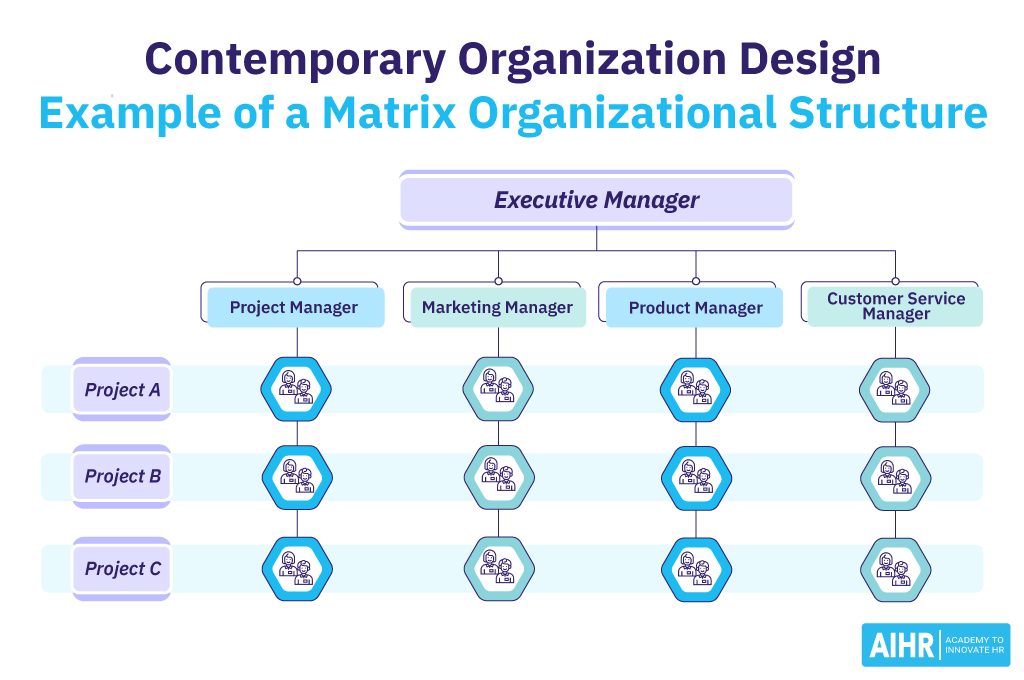Contemporary Organizational Design
In the 20th century, many companies operated in an old-fashioned, top-down fashion, but that approach has faded in recent years. Today’s organizations are more fluid and adaptive than ever before, and the nature of work has also changed.
Experts call this new style of organization contemporary organizational design. This kind of organization is designed to be more responsive to rapid change and challenges internally and externally. Not sure what contemporary organizational design looks like?
What is contemporary organization design?
Contemporary organization design is a type of business design that emphasizes speed, flexibility, and customer responsiveness. It is often seen in organizations that operate in fast-paced industries or in companies that are constantly innovating.
Businesses invest in organizational design because it allows them to compete better against large corporations by being more agile and flexible.
Contemporary organization design characteristics
There are different ways to design an organization, but contemporary organization design generally shares some common characteristics. These include:
- A focus on customer needs
- A flattened hierarchy
- Decentralization of authority
- An emphasis on team-based work
Additionally, contemporary organizations often strive for agility and flexibility to respond quickly to changes in the marketplace.

Types of contemporary organization designs
There are 5 types of contemporary organizational designs: Functional, divisional, matrix, team, and networking. Each type has its strengths and weaknesses, so it’s important to choose the right one for your business.
1. Functional structure
In a functional organization, the business is structured by grouping similar functions together within a department, usually aligned to a specific knowledge area. Each department has a specific function or set of functions to carry out. For example, the marketing department is responsible for creating and executing marketing campaigns. This type of structure is common in small businesses because it’s simple to set up and manage.
2. Divisional structure
A divisional structure is a type of organizational structure that groups people who work on similar products, services, or projects. This type of structure is also known as a product structure. Businesses often use it in the manufacturing industry, but it can be used by any business with multiple product lines to design its organization. This structure is also popular for organizations with multiple brands, where each brand is structured independently.
3. Matrix structure
A matrix structure is a type of organizational design in which employees report to more than one supervisor or manager. Companies can do this in several ways, such as functional/departmental lines, project teams, and regions. Matrix structures can be beneficial because they promote communication and collaboration between employees. However, they can also be disadvantageous because they can lead to confusion and conflict, with matrix structures notorious for high red tape or bureaucracy levels. It’s usually referred to as solid and dotted reporting lines in a matrix structure.
4. Team structure
The purpose of a team structure is to group different skills into a team with one goal or objective. To accomplish this, they will employ members from various departments who come together to accomplish any task or explore new opportunities. The intention is to lower barriers that exist between departments and improve cooperation when it comes to solving ongoing problems. In a team structure, it is not uncommon for teams to form, reform and dissolve on a continuous basis.
5. Network structure
The structure depends on external contractors and gig workers to do a lot of work on a contract basis. To put it more succinctly, managers can outsource specific work to specialists. Some advantages of a network structure include flexibility and the ability to respond quickly to change. However, this type of organization can also be chaotic and difficult to control and creates a lot of dependencies between various parties.
Advantages of contemporary organization designs
There are many advantages of contemporary organization designs. Some of these are;
- They can help organizations be more agile and adapt to change more quickly.
- They can also improve communication and collaboration between employees.
- They can lead to increased innovation and creativity within an organization.
- Contemporary organization designs can help create a more positive work environment overall.
- Contemporary design provide clear indications of how and where work needs to happen, which can lead to higher levels of productivity and employee engagement
Contemporary Organizational design aim to reduce the depth and number of hierarchical levels within the organization, which, if managed well, leads towards faster decision-making, more accountability, and a more responsive organization.
Disadvantages of contemporary organization designs
There are several disadvantages of contemporary organizational designs that managers should be aware of, such as:
- These designs can be very complex, making them difficult to understand and implement.
- They often require a high degree of coordination and communication between employees, which can be challenging.
- They often require solid governance and leadership alignment to be effective
- They may not always result in the most efficient use of resources and, if not managed well, can lead to an increase in costs and duplication of work.
- Different people might have differing opinions about what constitutes good design, leading to disagreement about how an organization should be structured.
A contemporary organization is designed to adapt to the ever-changing landscape of business. This type of organization is characterized by having a flat, decentralized structure and is geared toward customer needs.
Although this type of organizational design has some advantages and disadvantages, overall, it is a beneficial way to run a business in today’s constantly changing environment.








